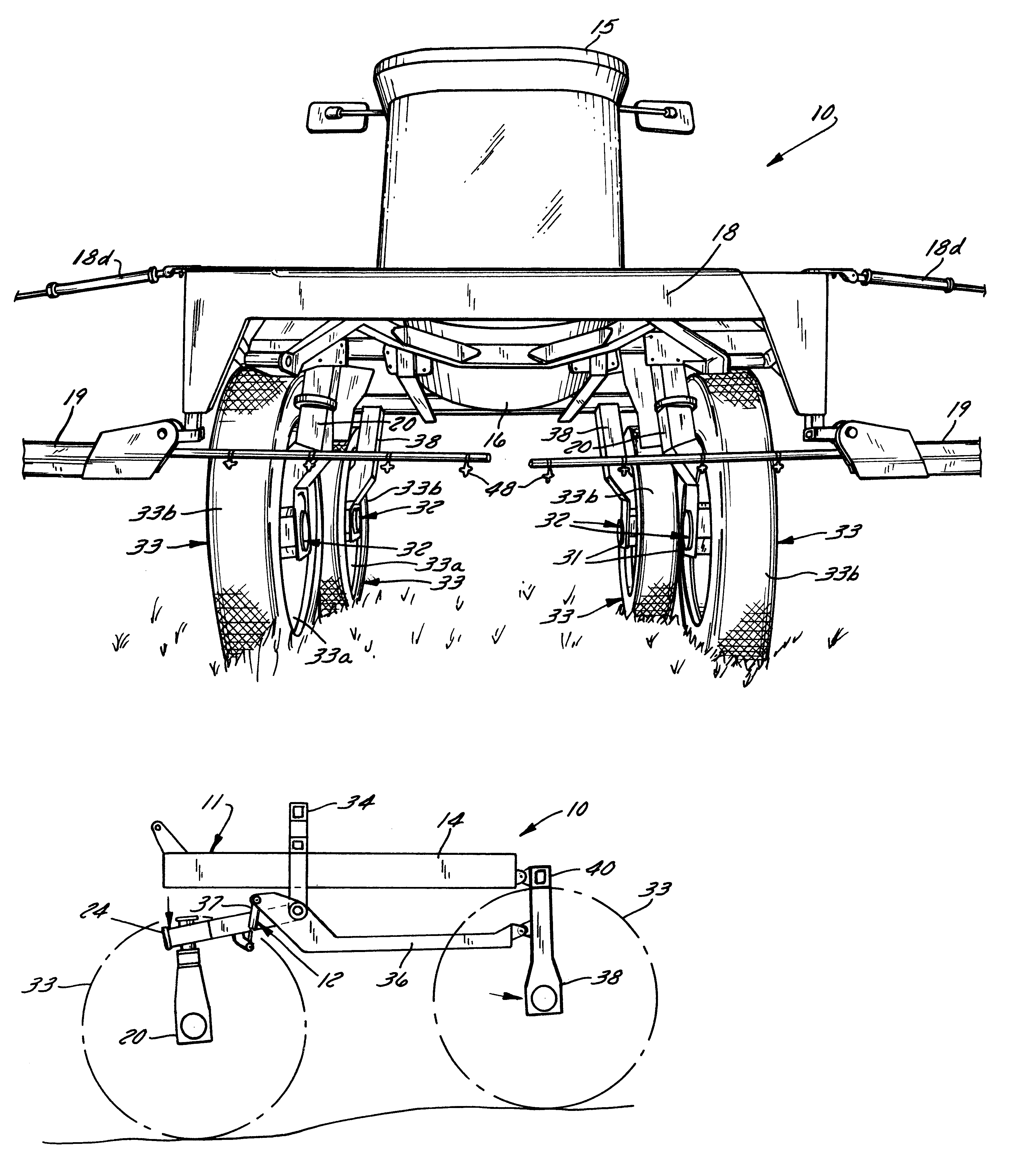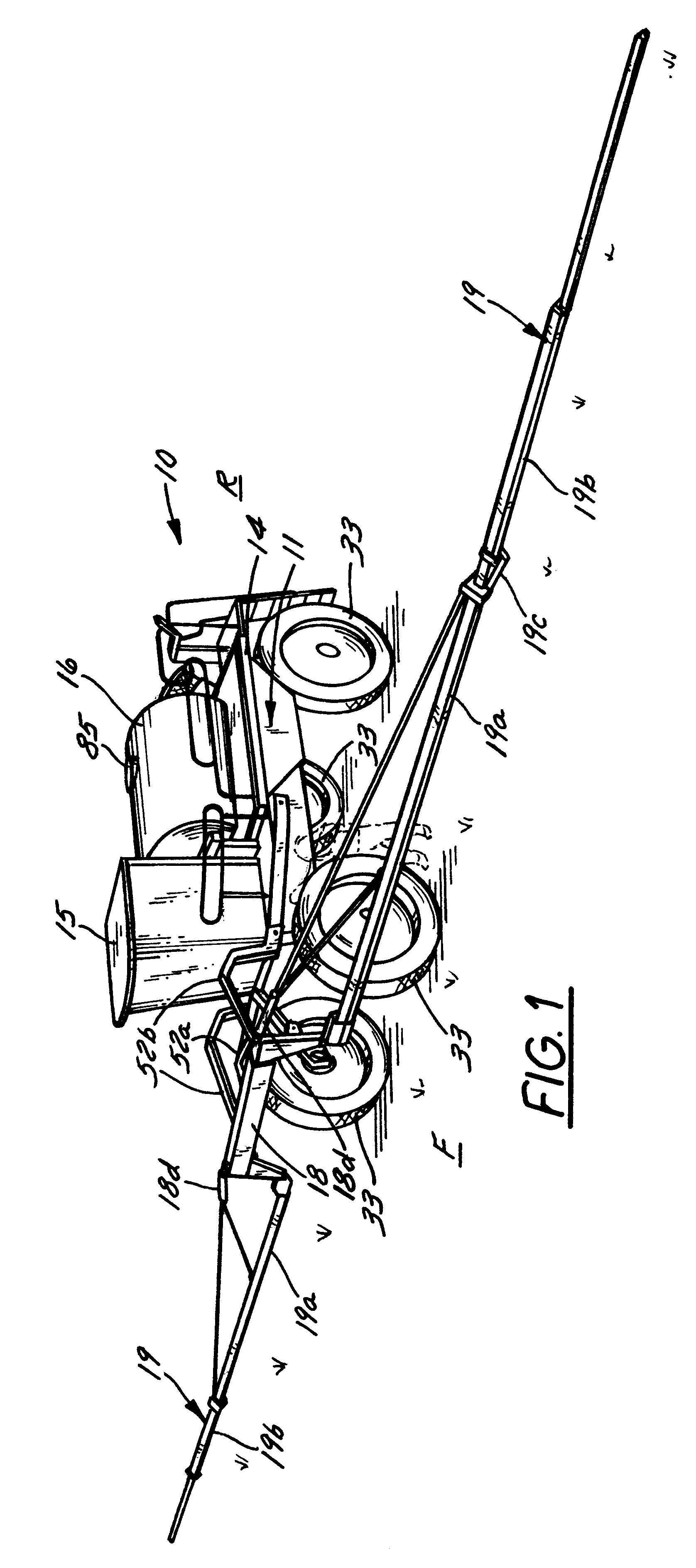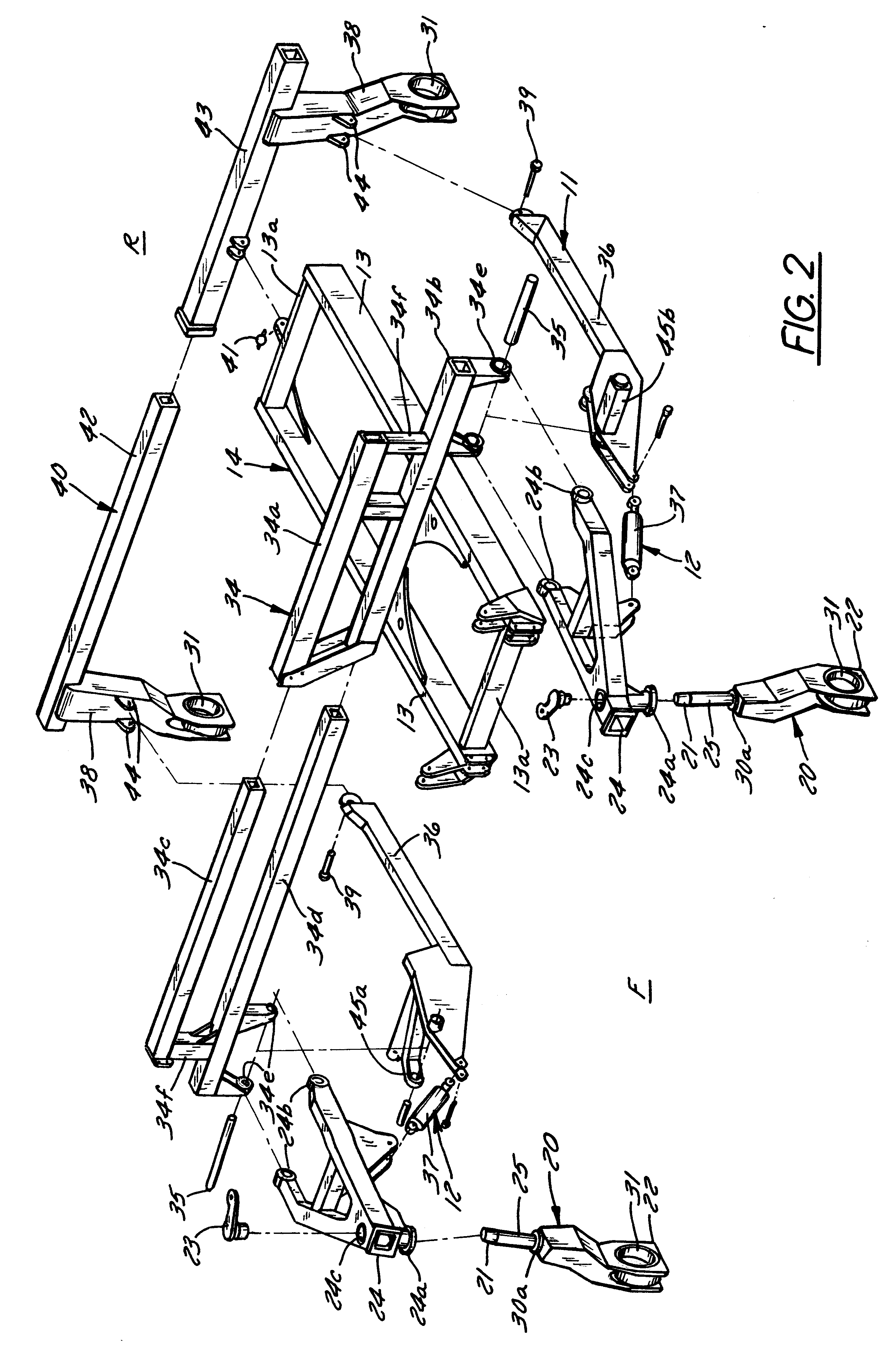However, conventional ground supported crop sprayers are usually not suitable during the latter
stages of growth.
For example, during the stem extension stage, the likelihood of damage to the standing crops increases if the spray is applied by a ground traversing conventional crop
sprayer.
Conventional crop sprayers are even more unsuitable for applying agricultural sprays during the heading and
ripening stage of the crop.
The effectiveness of aerial spraying is dependent in large part upon the weather conditions, and even then, the application of the spray is not as effective as ground spraying if damage to the standing crop can be avoided.
Further, the spray must be concentrated when applied by crop aerial dusting because of the limitations of the capacity of the aerial
sprayer.
Most of these devices suffer from one or more disadvantages such as limited
cushioning or bulkiness leading to interference with spraying the crop.
However, such a suspension is not suitable for most larger sprayers or sprayers having two or more steerable wheels.
Strut shaft type suspensions may not have the ability to provide all of the traction necessary to move freely about rough
terrain.
Furthermore, the strut shafts may bend under rough
terrain conditions thus making the vehicle less durable.
However, these often leak, and require supports with relatively large diameters both above and below the axle which interfere with the crops.
Therefore, providing adequate
cushioning without adversely affecting the crops continues to be a problem.
Further, commercial systems with spring suspension systems have added cab roll on sloping
terrain which results from compression of the springs.
One of the drawbacks of this
system is that the swing arms pivot point is high (for ground clearance) and the wheels are low.
This configuration can cause problems when the vehicle hits a bump because the wheels move out as much as they do up.
Thus, every bump the vehicle hits tends to shove the wheel into the crop which can damage the crop.
Moreover, as the vehicle's load gets heavier or lighter, it changes its wheel track, so that when it's fully loaded it may be running over the outside rows and when it is empty it may be running over the inside rows.
Linkage adjustments may be time-consuming and inconvenient.
For example, when spraying
solid seeded crops such as wheat or barley, sprayers must drive directly over the plants which may cause damage.
However, manually adjusting the wheel configurations can take a considerable amount of time and thus again reduce the vehicle's productivity.
Such top mounted arm arrangements often have an undesired movement of the steerable wheels over rough ground surfaces, referred to as bump steering, as the steering arms move up and down with the strut shafts.
All of these tanks increase the surface area of the vehicle which makes the vehicle more difficult to clean.
Further, this multitude of tanks adds unwanted bulk and takes up space on the vehicle which could be put to better use.
Connecting these various tanks to each other, to the boom, and to the vehicle involves a complex connection of hoses, circuitry, and clamping devices.
These aspects make it difficult for the operator to move around the tanks when it is necessary to plumb them and clean them.
However, as a boom increases in length, for example, fifty feet or more, the travel at the ends of the boom may become more violent when moving over rough terrain which may cause the boom to hit the ground or, even worse, snap.
Moreover, a violently bouncing boom that is uncontrolled may translate this energy to the vehicle making it increasingly less stable and more difficult to control (which, in turn, can effect the precise application of spray to the crops).
Maintaining good
visibility from the cab of the spray vehicle to the crops, the boom and nozzles and maintaining a direct
line of sight from the cab to the wheels is also important but has been problematic in the past.
These systems may become clogged with dust and debris when the high clearance vehicle is operating in early spring or late fall field environments.
The possibility of overheating increases also.
These problems can lead to decreased
fuel efficiency, increased down time, and even worse, permanent damage to the engine and / or the hydraulic oil
system.
This can be a major operation, and it increases vehicle down time, thus decreasing the operator's and vehicle's productivity.
 Login to View More
Login to View More  Login to View More
Login to View More 


